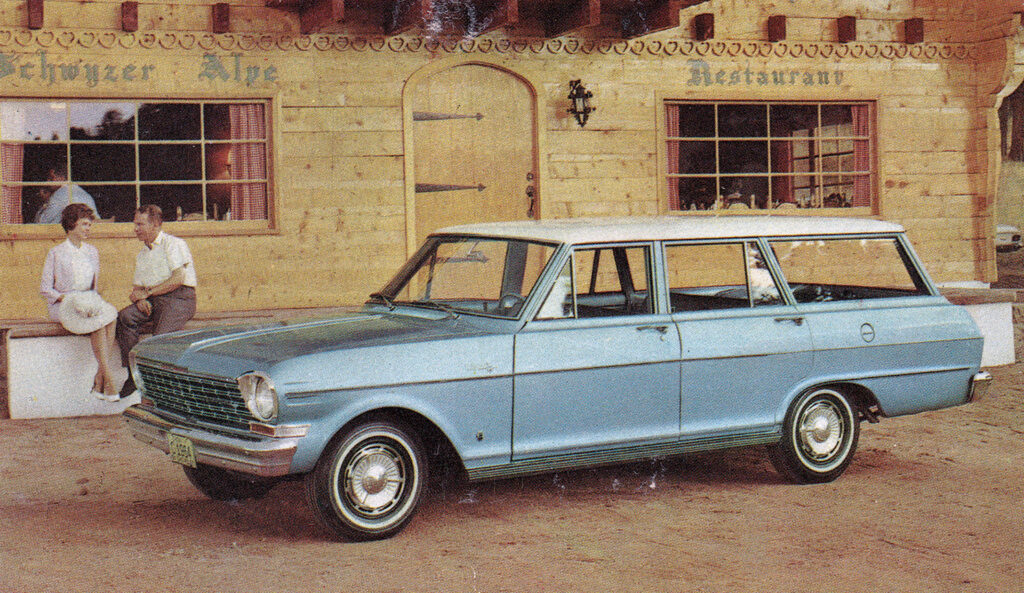
Michael Bushnell
Publisher
Typically, our Labor Day postcard spotlights mill workers pictured in the Boiler Room of the Kelly Flour Mill that used to be located in the East Bottoms. We’re changing it up this year to give you a look at the 1964 Chevy II Nova four-door station wagon, produced by members of the United Auto Workers Union.
The first generation of Chevy II’s rolled off the assembly line at General Motors’ (GM) Willow Run, Michigan assembly plant in August of 1961. It sat on a 110-inch wheelbase and according to GM engineers, was a basic car built on Chevy’s X-Platform and designed to directly compete with the popular Ford Falcon. When he announced the Chevy II to the press, Chevrolet General Manager Ed Cole described the car as offering “maximum functionalism with thrift.”
The 1964 model year saw sales of the Chevy II plummet with the introduction of the Chevelle, which would almost instantly become one of the more popular muscle cars of the day. Chevy continued production of the Nova on the same platform through the 1967 model year. For 1968, GM engineers completely redesigned the Nova and in 1969, opted to drop the Chevy II moniker and move forward under the Nova brand.
The base Nova came standard with a 250-cubic inch six-cylinder or an optional 307-cubic inch V-8. For Chevy II enthusiasts, 1965 is best remembered as the year the Chevy II became a muscle car. A 327-cubic inch (5.4 l) V8 was available with up to 300 horsepower (220 kW), suddenly putting Nova SS on a par with the GTO, the Oldsmobile 442 and the Ford Mustang 289 V-8 models.
Following design trends in the 1970s, downsizing vehicles by virtually all of the American vehicle manufacturers, the Nova was replaced in 1980 with the Citation model. Like the sub-compact Vega, the Citation wasn’t one of GM’s crowning achievements.
This particular advertising postcard was mailed on April 7, 1964 from Union Chevrolet at 1615 Independence Ave., basically the Southeast corner of Independence and Highland. Salesman Bill Bryan and dealership owner Jerry Green stamped their names on the back of the card that was mailed to Eilsen Ziegler at 501 Lawn Ave.
The stamped message on the back of the card reads: “Dear Sir, Would you take top $ for your car today on a new used Chevrolet if I can get it for you? I think I can get you a deal you can’t refuse. Please come in or call me today.”
The Union Chevrolet building was a variety of automobile dealerships down through the years including New Union Chevrolet and Celebrity Chevrolet. It was razed in the early 2000s as part of Kansas City University’s expanded development. The site is used for surface parking today.


















